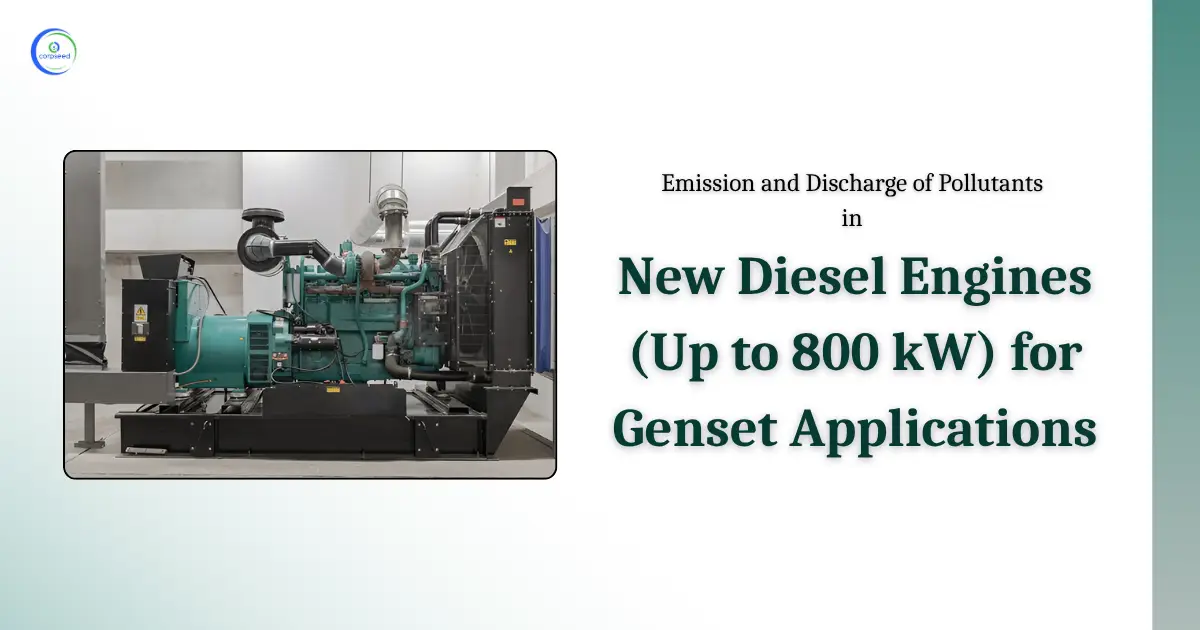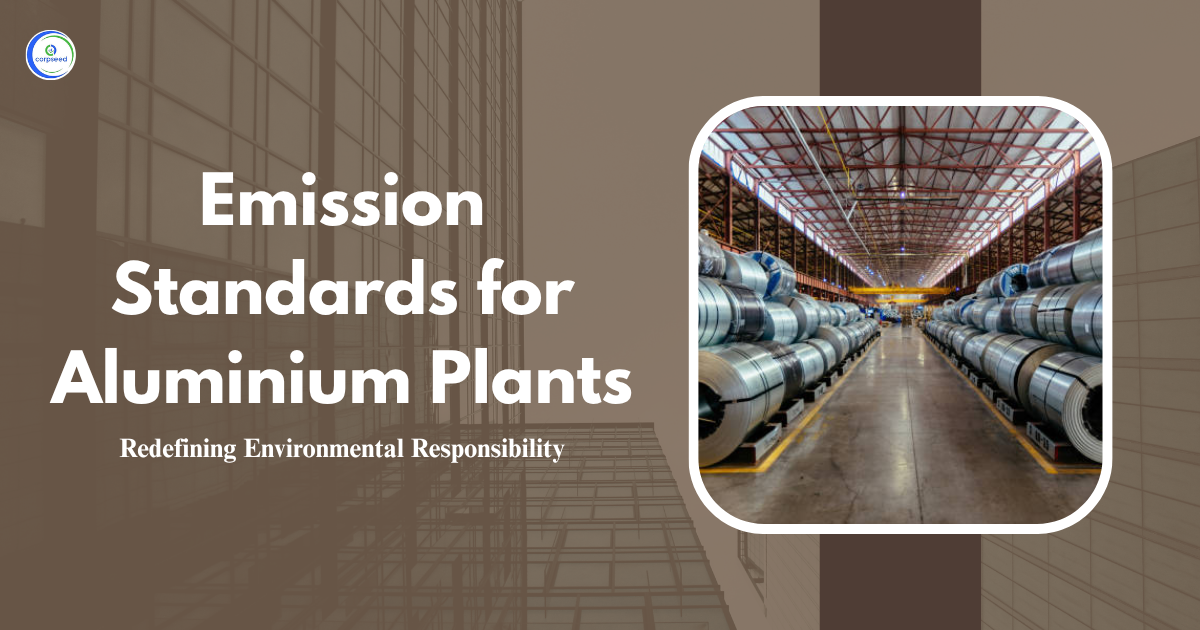Gas and naphtha-based thermal power plants are cleaner substitutes to coal-fired plants, but they still release pollutants that can affect the environment. To mitigate their impact, the Central Pollution Control Board (CPCB) has prescribed specific environmental standards for gas/naphtha-based thermal power plants. These standards control emissions of pollutants into air and water to ensure sustainable energy production, compliance with the Environment (Protection) Act, and enhanced air and water quality.
Table of Contents
Understanding Environmental Pollutants
Gas and naphtha-based thermal power plants release numerous pollutants during the process of fuel combustion and water cooling. Foremost emissions include nitrogen oxides (NOx), which contribute to smog, acid rain and respiratory problems. Additionally, emissions of heated water, chemical additives, and heavy metals from these plants can contaminate aquatic reservoirs, harm aquatic ecosystems, and harm the long-term quality of nearby environments.
Though these plants often look clean compared to coal-based stations, their emissions still pose environmental challenges. Without strict implementation of emission control measures, they can contribute to air pollution, thermal pollution, and toxic water pollution. Therefore, the environmental standards and limits of dischargeable substances set by the Central Pollution Control Board (CPCB) and the respective State Pollution Control Boards (SPCBs) play a significant role in guaranteeing that these plants function within safe environmental boundaries.
--------------Blog Contact Form-------------
Environmental Pollutants from Gas/Naphtha-Based Thermal Power Plants
Some significant pollutants from gas and naphtha-based thermal power plants include:
- Nitrogen Oxides (NOx): Produced during high-temperature combustion, NOx gases can exaggerate respiratory conditions and add to ground-level ozone and smog formation.
- Sulphur Dioxide (SO2): Though released in smaller amounts compared to coal plants, SO2 emissions are still present and must be managed with adequate stack height to disperse pollutants effectively.
- Thermal Pollution: The discharge of warm water into rivers or lakes changes water temperature, disturb aquatic habitats, and minimizes dissolved oxygen levels essential for aquatic life.
- Chemical Discharges: Cooling systems often emit harmful substances such as chlorine, phosphates, and related solids, which can lower water quality and affect biodiversity.
- Heavy Metals: Wastewater can include metals like copper, iron and chromium, which accumulate in sediments and organisms, posing long-term environmental damage and potential health risks to nearby communities.
Benefits of Emission Standards
Emission standards are important to control pollution and promote sustainable energy production. They not only safeguard the environment but also boost industries to adopt best practices for cleaner operations.
- Improved Air and Water Quality: Emissions regulations limit pollutants like NOx, chlorine, and suspended solids, ensuring clean air and safe water for ecosystems and communities living near power plants.
- Public Health Protection: By mitigating the presence of harmful pollutants, these standards reduce the risks of respiratory, cardiovascular, and waterborne diseases in the general population.
- Legal Compliance and Accountability: Plants complying with CPCB and SPCB standards avoid regulatory fines and maintain operations without interruption, promoting transparency and environmental responsiveness.
- Sustainable Resource Management: Through better waste management, these standards help protect water reservoirs, protect aquatic life, and minimize soil and water pollution, supporting long-term ecological sustainability.
- Encouragement for Clean Technologies: Strict principles encourage industries to invest in advanced combustion systems, waste treatment facilities, and monitoring devices, which will accelerate India’s transition to clean and green energy.
Emission Standards for Gas/Naphtha-Based Thermal Power Plants
The CPCB has defined particular emission standards for gas/naphtha-based thermal plants based on plant capacity and fuel type. Following are the key parameters:
(i) Limit for emissions of NOx
(a) For existing units-150ppm (v/v) at 15% excess oxygen.
b) For new units with effect from 1.6.1999
| Total generation of gas turbine Limit for Stack NOx emission [v/v),at 15% excess oxygen] | |
| a) 400 MW and above |
(i) 50 ppm for the units burning natural gas. |
| b) Less than 400 MW but Up to 100 MW | (i) 75 ppm for the units burning natural gas. (ii) 100 ppm for the units burning naphtha |
| c) Less than 100 MW | 100 ppm for units burning natural gas or naphtha as fuel |
| d) For the plants burning gas in a conventional boiler. | 100 ppm |
Stack Height Requirement:
To ensure proper dispersion of SO2 emissions, stack height (H) is calculated using the formula:
H = 14(Q)^0.3, where Q = SO2 emission rate in kg/hr, subject to a minimum height of 30 meters.
Liquid Waste Discharge Limits
To prevent contamination of neighbouring water reservoirs, gas and naphtha-based thermal power plants must comply with strict liquid waste emission limits. These limits are designed to control the concentration of harmful substances in emissions from the cooling system and other plant operations. Compliance with these parameters ensures that released water pose no threat to aquatic life, public health, or the environment. Below are the prescribed limits for significant pollutants.
| Parameter | Maximum Limit |
| pH | 6.5 – 8.5 |
| Temperature | As per thermal norms |
| Free Available Chlorine | 0.5 mg/l |
| Suspended Solids | 100 mg/l |
| Oil and Grease | 20 mg/l |
| Copper (Total) | 1.0 mg/l |
| Iron (Total) | 1.0 mg/l |
| Zinc | 1.0 mg/l |
| Chromium (Total) Phosphate |
0.2 mg/l 5.0 mg/l |
Monitoring and Reporting
To ensure compliance with emissions and discharge standards, gas and naphtha-based thermal power plants must implement stringent monitoring and reporting methods. Accurate measurement of pollution requires testing of emissions during steady operating conditions, particularly focusing on nitrogen oxides (NOx) in high-capacity plants. Liquid waste parameters, such as pH, chlorine, and heavy metals, should be tested twice to ensure safe settling. Plants need to maintain detailed records of emissions and discharge data and submit regular reports to State Pollution Control Boards (SPCBs). The use of Continuous Emission Monitoring Systems (CEMS), is fortified or compulsory, which enables real-time monitoring of pollutants such as NOx and SO2, to permit immediate corrective actions to prevent environmental damage.
Conclusion
Environmental standards for gas/naphtha-based thermal power plants are important to ensure that power generation does not come at the cost of environmental degradation. These standards help set emissions into the air, emissions released into aquatic reservoirs and heat released into the atmosphere. They play a central role in guarding air and water quality, mitigating health risks, and supporting India’s environmental and energy goals.
By following comprehensive principles laid down by CPCB and implemented by SPCBs, you can ease your environmental impact by maintaining efficient power generation. In an era of rising environmental awareness and global climate targets, stringent adherence to these emissions standards ensures not only legal compliance but a cleaner, more efficient, and more sustainable future for all.
This portion of the site is for informational purposes only. The content is not legal advice. The statements and opinions are the expression of author, not corpseed, and have not been evaluated by corpseed for accuracy, completeness, or changes in the law.
BOOK A FREE CONSULTATION
Get help from an experienced legal adviser. Schedule your consultation at a time that works for you and it's absolutely FREE.







_Corpseed.webp)
.webp)
